When it comes to choosing the perfect flooring for your home, understanding the differences between linoleum, vinyl, and laminate and what purpose they serve best can help you pick the one that suits your own needs.
In this Linoleum vs Laminate vs Vinyl Comparison article, we will look at different aspects, including costs, installation ease, room suitability and variations, eco-friendliness, and more. By the end of this article, you’ll be ready to choose the best flooring option for your own needs.
Cost Comparison: Which One Costs More?
We start with the obvious one, the cost. The following is our cost breakdown for linoleum vs laminate vs vinyl flooring, focusing on the material and installation costs:
Linoleum keeps a balance between cost and eco-friendliness, so it’s no wonder it is a popular choice among environmentally conscious homeowners.
Material cost: $2 to $7 per square foot.
Installation cost: $1 to $4 per square foot. Overall, you can expect a total cost ranging from $3 to $11 per square foot.
Vinyl, known for being a versatile and practical flooring option, offers a wide price range to cater to various budgets.
Material cost: ranges from $1 to $7 per square foot, depending on the type and quality.
Installation cost: can vary, typically falling between $2 and $8 per square foot.
Laminate sits comfortably in the middle price range, providing a cost-effective alternative to traditional hardwood. Realistic designs make it an appealing option for many homeowners.
Material cost: Generally, it falls between $1 and $11 per square foot; it depends on the quality and design of the laminate.
Installation cost: Averages around $3 to $7 per square foot.
Verdict: Vinyl’s affordability and adaptability make it a go-to choice for many homeowners. Laminate balances both cost and style well, while linoleum appeals to eco-conscious consumers.
With all three of them being on the affordable spectrum, there is no clear winner here, but make sure to get quotes from your local retailer as the prices we presented here may vary.
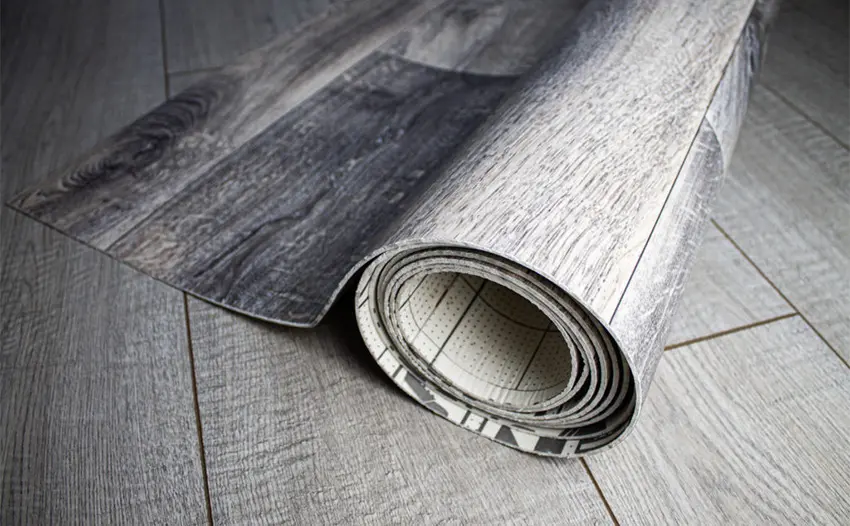
Best Brands of 2024
Ease of Installation: Professional installation or DIY?
Now, let’s compare linoleum vs laminate vs vinyl and see which one is the easiest to install and how friendly they are for DIY projects.
Linoleum: Linoleum typically requires professional installation, and that can bump the cost, but it will ensure that you get a quality finish.
Vinyl: Vinyl offers various installation options, including DIY-friendly choices like peel-and-stick or click-and-lock, which can reduce installation costs.
Laminate: Laminate also provides DIY-friendly installation options. Some types of laminate might incur additional costs for underlayment or moisture barriers.
Verdict: Vinyl and laminate are ideal for DIY enthusiasts looking for ease and affordability in installation. Linoleum’s higher installation cost is offset by its durability and unique environmental benefits.
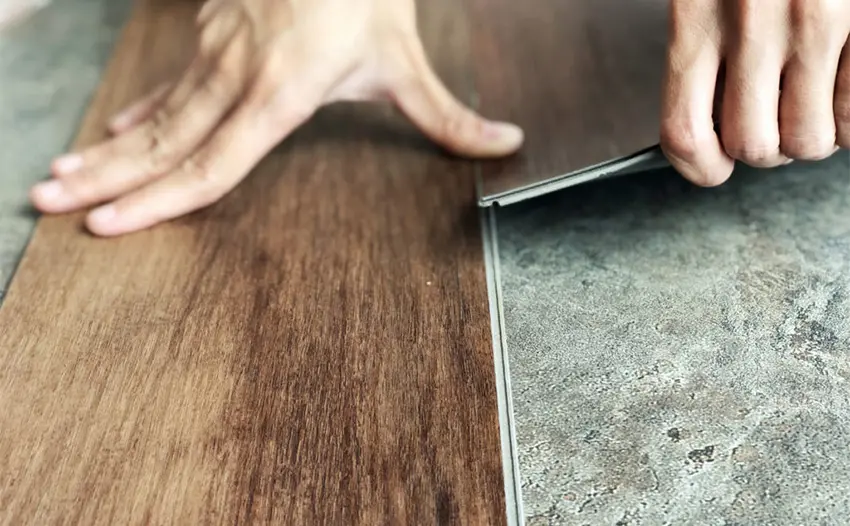
Room Suitability: Where Does Each One Shine?
Let’s assess how these flooring options fit in different rooms.
Linoleum vs. laminate vs. vinyl:
Bedroom: Linoleum creates a cozy, eco-friendly ambiance wherever you put it, especially in bedrooms. Laminate provides an elegant look that mimics a more expensive hardwood look. Vinyl, especially luxury vinyl, offers comfort and style, and it just feels nice to step on it first thing in the morning.
Bathroom: Linoleum can work well if it is properly sealed, but it’s not ideal for highly moist areas where occasional spills can happen. The same goes for laminate, which is not recommended due to moisture sensitivity as well. Vinyl, on the other hand, particularly vinyl planks, excels in bathrooms with its excellent moisture resistance.
Basement: Linoleum may not be the best choice for a basement as it is often moisture-prone. Laminate faces similar challenges unless you buy premium waterproof laminate options. Vinyl, particularly vinyl tiles or planks, is the top contender for basements due to its resilience in the face of moisture and spills of any kind.
Verdict: Vinyl’s water resistance positions it as the go-to option for rooms with moisture concerns, including bathrooms and basements. Laminate is a great choice for rooms like bedrooms and living rooms due to its aesthetic appeal. Linoleum remains the preferred choice for eco-conscious spaces, but it may require more maintenance and care.
Eco-Friendliness and Health Impact: How Safe Are They?
Next, let’s consider the eco-friendliness and health impact of linoleum vs vinyl vs laminate.
Linoleum: Linoleum stands out for its sustainability since it is made from natural, biodegradable materials and has low VOC emissions.
Vinyl: Vinyl’s PVC composition raises environmental concerns, but newer recycling practices are improving its footprint.
Laminate: Laminate’s eco-friendliness varies. Seek products with recycled content and low VOC emissions for a greener choice.
Verdict: Linoleum leads in eco-friendliness, appealing to environmentally conscious consumers. Laminate and vinyl offer varying degrees of eco-friendliness, with a focus on choosing sustainable and low-VOC options.
Durability and Wear Resistance: Which One Lasts Longer?
Now, let’s look into the durability and wear resistance and compare linoleum vs vinyl vs laminate.
Linoleum: Linoleum offers excellent durability and often lasts up to 40 years if properly maintained. It’s scratch-resistant but can be susceptible to moisture if not properly sealed.
Vinyl: Vinyl is very durable, especially luxury vinyl options. It’s resistant to moisture, scratches, and stains, making it suitable for both high-traffic and damp areas.
Laminate: Laminate is known for its sturdy wear layer, which protects against scratches and general wear. However, it’s not as moisture-resistant as vinyl, so you should avoid installing it in spill-prone areas.
Verdict: Vinyl excels in durability and moisture resistance, making it ideal for kitchens and bathrooms. Linoleum offers long-term durability with an eco-friendly edge. Laminate provides robust wear resistance and is best suited for dry, high-traffic areas.
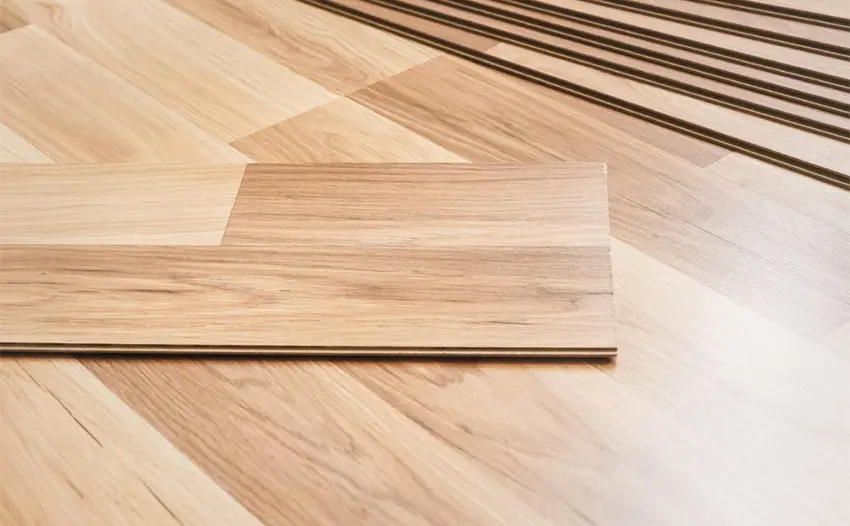
How Easy Is It To Maintain Each Of Them?
Lastly, let’s discuss maintenance when comparing linoleum vs vinyl vs laminate.
Linoleum: Linoleum requires regular cleaning and occasional waxing or sealing to maintain its shine. While it is very resilient, it may require professional refinishing over time.
Vinyl: Vinyl is very low-maintenance, requiring only regular sweeping and occasional mopping. It’s resistant to stains and moisture, making it easy to keep clean.
Laminate: Laminate is easy to clean and maintain but very sensitive to standing water. Immediate cleaning of spills is necessary to prevent warping or further damage.
Verdict: Vinyl stands out for how easy it is to maintain, especially in those busy or spill-prone areas. Laminate is also low-maintenance but requires prompt spill management. Linoleum, while durable, demands more attentive care for longevity and can’t stand most commercial flooring cleaners as the acidity levels in those can cause fading.
Conclusion
Choosing between linoleum vs vinyl vs laminate flooring depends on your specific needs, your lifestyle, and your preferences. Whether you value the eco-friendliness of linoleum, the versatility and water resistance of vinyl, or the stylish allure and durability of laminate, our comprehensive comparison equips you with the knowledge to select the perfect flooring solution for your living space.
About The Author

Savannah Howe
February 2, 2024
Savannah is a midwestern writer who dabbles in blogging, poetry, and news. When she's not stuck behind a desk, she can be found hiking, in a coffee shop, or chasing a rambunctious toddler.

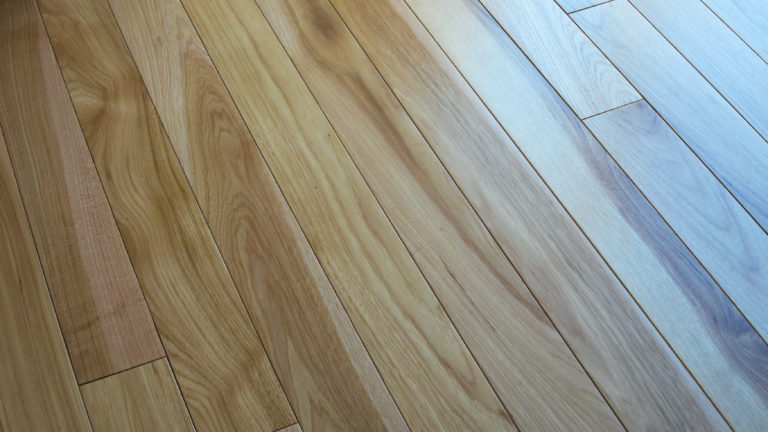

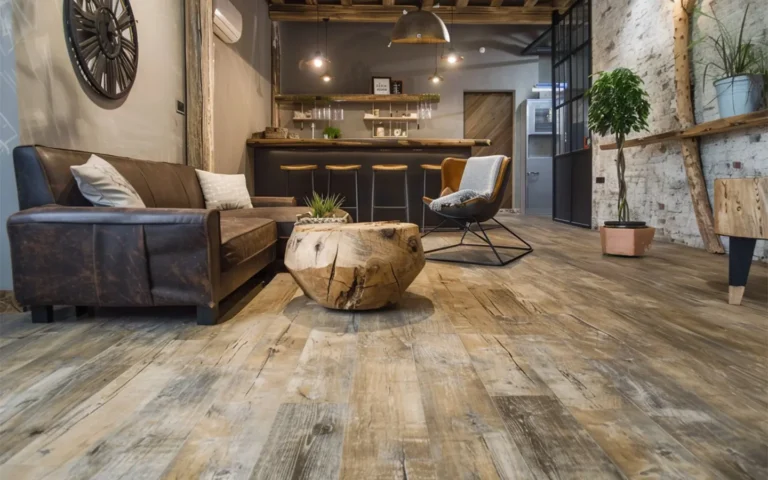

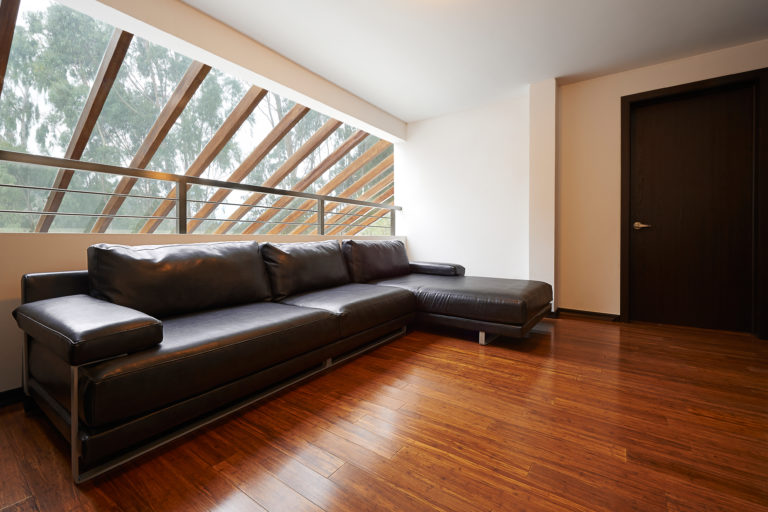

5 comments
Jimmie
Thank you for the article.
Andrew
It’s great that you mention the non eco friendly nature of pvc and laminate but I’m stunned that you do not mention the toxic off gassing of formaldehyde that comes with laminate and other composite wood flooring. This alone is a very major con.
Cork, linoleum and real hardwood are the option of choice for non toxic floors.
Samuel Greenberg
Hi Andrew,
Thanks so much for reading and for your excellent point! We agree and actually go in-depth on the issues with formaldehyde and off-gassing from laminate floors in this article. Let us know what you think and thanks again for reading!
Missy
What a wonderful, thoughtful and empathetic article with history lessons to boot! Thank you for gently explaining why my laminate kitchen floor is really vinyl, and why I can celebrate that.
Samuel Greenberg
Thanks so much for the kind words, Missy! We’re so pleased you liked our article and we couldn’t agree more—vinyl flooring is absolutely worth celebrating!